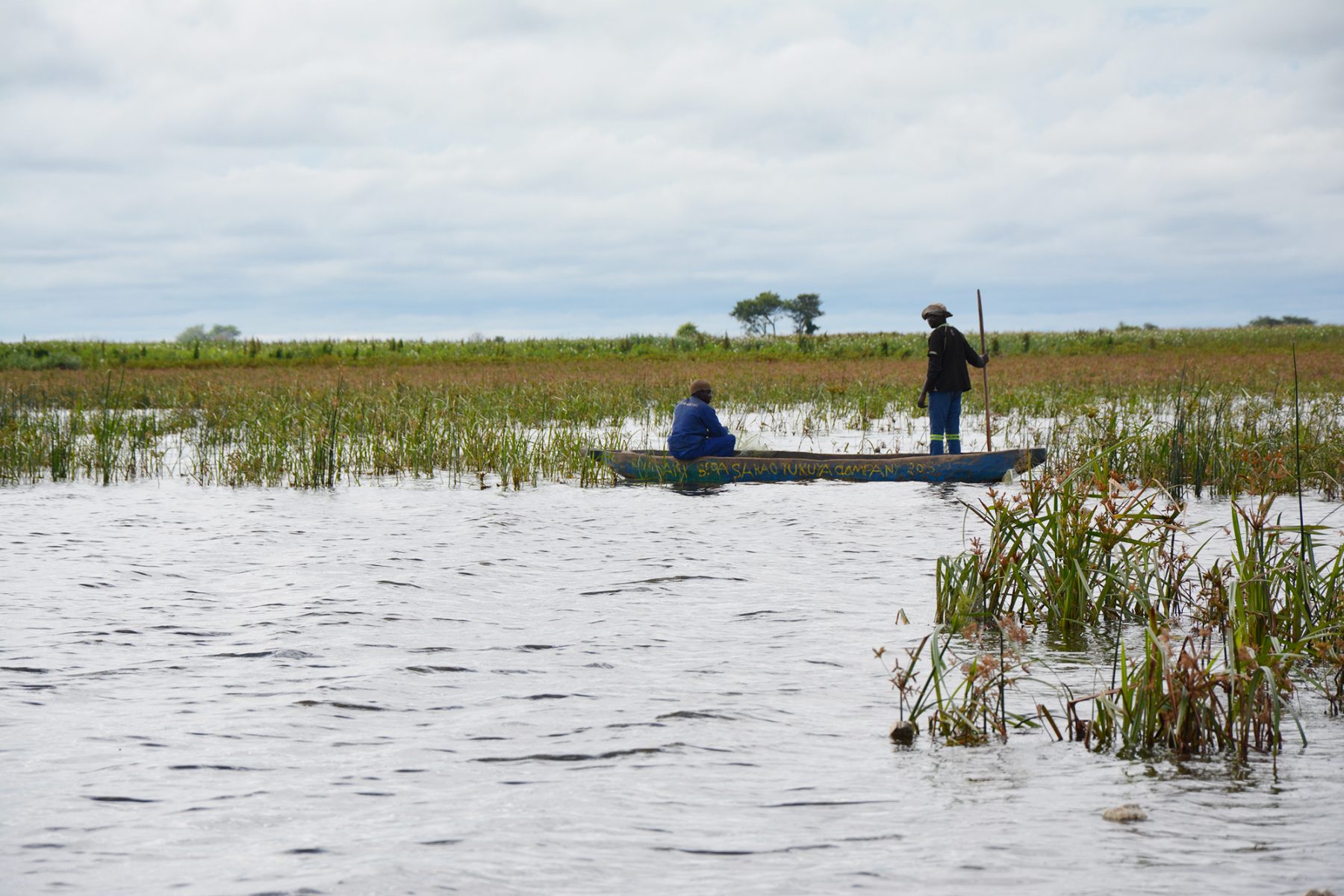Cette publication est également disponible en :
![]() Français
Français

Anaël Lehmann, May 20th 2021, Institute of Earth Surface Dynamics (IDYST)
Paleoecology is the study of the history of an ecosystem using sedimentary records. Analyses of the mineralogical, chemical, isotopic and biological composition of the sediment can provide clues on the past environmental conditions of a particular ecosystem. The topic is of particular importance today since many lakes, river deltas or marshlands are subjected to increasing anthropogenic influence related to population growth and a parallel increase in agricultural and industrial activity. In many cases, these ecosystems are of important social, ecological, and economic value to the population living within the watershed of this precious water resource. Wetlands in arid climates represent unique ecosystems and are of major importance for an often specialized flora and fauna. They represent a life-supporting water source in an otherwise inhospitable environment. These environments are, however, particularly fragile ecosystems as they respond sensitively to any climatic or environmental changes.
The present study focuses on the regions of the Caprivi in Namibia and of northern Botswana. These regions hold the second largest endorheic delta system in the world. This specific landscape is the result of an active tectonic activity related to the East African Rift system and accommodating differential movements between different plates and rigid cratons. It results in a deformation zone called Okavango Graben that presents normal faults all along these two regions. These normal faults affect and control the course of the Okavango, Kwando and Zambezi Rivers and form a complex system of rivers and waterbodies. A minor change in tectonism and faulting can influence the morphology and hence the drainage pattern of the entire system. The Okavango Delta has been described through numerous studies already. In contrast, the region of the Linyanti-Chobe Basin with Lake Liambezi in its middle remains poorly studied or understood. Moreover, studies on the Quaternary climate evolution in northern Namibia and Botswana demonstrated the difficulty to find or target paleo-environmental archives with well-dated proxies and results might show inconsistencies or even contradictions. Therefore, the choice was made to focus on this extraordinary region, showing a high complexity of connection between the different rivers and waterbodies.
Lake Liambezi has been investigated through a number of sediment cores using a multidisciplinary approach including mineralogy, geochemistry, organic matter composition and a novel use of bacterial DNA populations. A climatic and environmental evolution of the lake and its surroundings is proposed for the last 5400 years BP. This highlighted an alternation of relatively dry and wet periods, and changes in the hydrological lake regime. However, major evolutions and changes in shape and environmental settings of the lake can also be related to the tectonic activity linked to the Okavango Graben. This was supported by the marked presence of thermophilic bacteria. A first sediment record is estimated at about 5420 years BP and is described as the tectonic opening of Lake Liambezi’s north basin. An extension of this basin was likely developed at around 1650 years BP. The second basin of the lake was probably created during the last known tectonic event dated at around 1000 years BP. Successively, the resulting depressions are filled with lacustrine and fluvio-deltaic sediments. The watershed, the climate and the morphology of the site define the environmental conditions of the lake and therefore control the sediment types and content.
To target paleo-environmental archives with well-dated proxies is challenging, certainly in tectonically active continental systems. The present work demonstrates the relevance of using a multidisciplinary approach in such complex systems. The integrated approach of using multidisciplinary methods does allow for an elaboration of a coherent age model for Lake Liambezi with a coherent environmental and climatic evolution. This approach also demonstrated the potential of using bacterial DNA (total and/or lysis-resistant) to identify changes and variability in the environmental conditions of such an environment. The multidisciplinary approach including characterization of bacterial DNA populations might therefore be developed for future projects in diverse types of environments.



This is an interesting study I would like to see more details of as I have had the privilege to study the fish life and fisheries of Liambezi during the 1970s and again in the 2000s. A response and reference to reports or papers will be appreciated.
Ben C W van der Waal
Thank you for your interest. All UNIL theses are deposited on our academic server with the full text in open access. This thesis is not yet available. I will keep you informed, when it’ll be done …